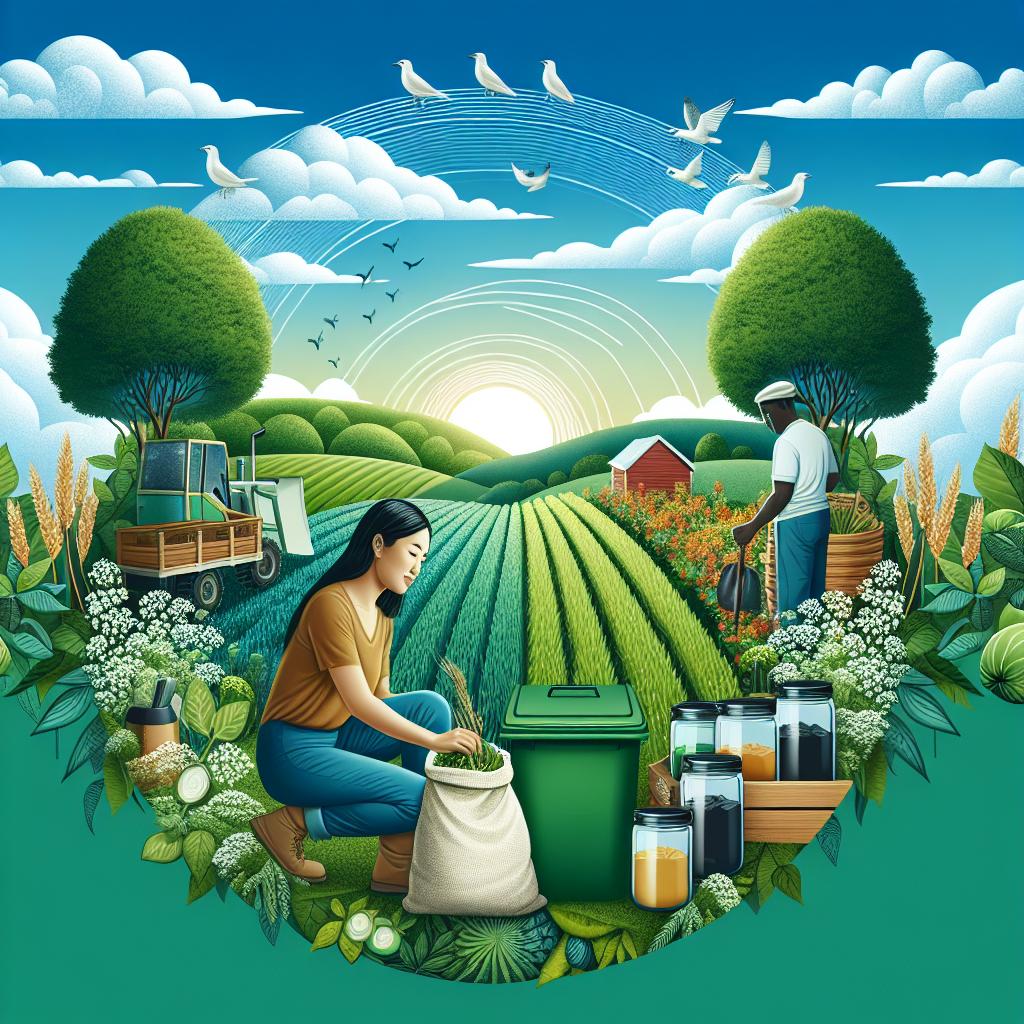Celebrating Earth Day

As we approach Earth Day on April 22, it's a perfect time to reflect on our impact on the planet and consider ways we can reduce our carbon footprint. This year's theme for Earth Day is Invest in Our Planet, a call to action for individuals, businesses, and governments to take tangible steps toward a sustainable future. In this article, we'll explore four related topics that can help us move in the right direction: Zero Waste, Earth Day initiatives, Restoration, and Circular Economy, with a focus on Climate-Smart Agriculture.
First, let's talk about Zero Waste. Zero Waste is an approach to consuming resources that aims to eliminate waste through reducing, reusing, and recycling. It's about shifting from a linear economy, where we take, make, use, and dispose of products, to a circular economy where resources are kept in use. This year, Earth Day Network, the organization behind Earth Day, is encouraging people to adopt the Rise Above Plastics campaign, which includes reducing our use of single-use plastics, supporting businesses that minimize plastic waste, and advocating for legislation to ban harmful plastics.
Second, let's discuss Earth Day initiatives. Earth Day is an opportunity to raise awareness and take action on environmental issues. This year, Earth Day Network is focusing on four core areas: Climate, Food, Nature, and Water. Climate action includes reducing our carbon footprint and transitioning to renewable energy sources. Food system action involves promoting sustainable agriculture and reducing food waste. Nature action includes protecting biodiversity and restoring ecosystems. Water action includes protecting water resources and reducing plastic pollution.
Third, let's examine Restoration. Restoration is the process of returning degraded or destroyed ecosystems to a healthy state. This year, Earth Day Network is launching the Earth Restoration Corps, a global team of volunteers dedicated to restoring ecosystems and addressing climate change. Restoration projects can include reforestation, wetlands restoration, and habitat restoration. These projects not only help to mitigate climate change but also provide numerous benefits, such as cleaner air, improved water quality, and increased biodiversity.
Fourth, let's explore Circular Economy, with a focus on Climate-Smart Agriculture. Circular Economy is an economic system that aims to keep resources in use for as long as possible, extract the maximum value from them, and then recover and regenerate products and materials at the end of each service life. Climate-Smart Agriculture is a sustainable agricultural practice that uses natural systems to reduce greenhouse gas emissions while increasing productivity and improving food security. This can include practices such as conservation agriculture, agroforestry, and regenerative agriculture. By adopting circular economy principles in agriculture, we can reduce the amount of resources used, minimize waste, and help mitigate climate change.
In conclusion, as we celebrate Earth Day this year, let's remember that we all have a role to play in Investing in Our Planet. By embracing Zero Waste, participating in Earth Day initiatives, supporting Restoration efforts, and advocating for Circular Economy principles, we can make a difference. We can reduce our carbon footprint, protect our natural resources, and create a more sustainable future. Let's rise to the challenge and make this Earth Day one to remember.




